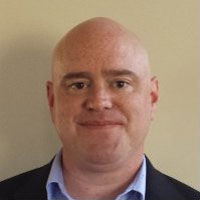But We're a Family!

Most everyone knows at least one family that is one of those close-knit, ultra-supportive units that shares its love with the community. Sure, there’s probably some dysfunction beneath the surface just like any other family, but in this one every member has an integral and irreplaceable role, and there is strength and loyalty in the family bond. Mother, father, brothers, sisters… they’re always there to support each other, and they’re loathe to let each other down. Working together, they accomplish great things, even in difficult times. Being a part of this family is unique and special, and the thought of it breaking apart is almost unfathomable.
When we talk to managers and staff, we often hear that them describe their organizations as “like family”, and they usually mean it in a positive way. But associations today are facing inevitable, transformative changes, many of which will create upheaval in the workforce. There’s no way around the fact that new people need to be hired, and long-tenured employees either have to adopt different roles or depart altogether. In other words, transformational change is asking associations to disrupt deep family connections. It’s no wonder that some association leaders are reluctant to do so, if only out of loyalty to their charges.
But what family doesn’t evolve? Everyone ages, and their contributions have to shift. Some people depart this world for the next. Sons and daughters get married, and move out of the house. They have children, new additions who grow up in different circumstances and bring unique personalities and perspectives to the family. Through all of this, though, many families maintain a strong family bond that adapt—even strengthens—with each “life change”. No one is cast aside, and those who enter the group are treated as integral parts of the whole. Grandkids are welcomed, loved, and nurtured, even if they require patience along the way.
Why shouldn’t “organizational families” embrace the same experience? The roles of valued long-term employees have to change as their skills become outdated. A few people may move on to other places, while others move up and become managers, Division Directors, even executives. Outsiders are going to join the staff. Generation X’s add their extensive experience and new perspectives to the mix. Millennials, who grew up in a dynamic, sometimes revolutionary world, bring ideas they form throughout their young lives, and require patience as they learn how to express them and managers find out how to encourage them.
These are challenges but, just like a strong family unit, they don’t have to kill the “family organization”. Our understanding of the family must progress. Association leaders, managers, and staff members should embrace evolution while maintaining the core elements of what it means to be a family—e.g., identity, commitment, loyalty, and supportiveness. This means, among other things, welcoming, assimilating, and encouraging new hires, either staying active and fit to contribute at the same level or to shifting into different roles, and even letting people move on to other pursuits, willingly or unwillingly, for the benefit of the collective.
Practically speaking, a contemporary understanding of the family has more than a few implications for both organizations and individuals in the workforce. For example, association leaders and managers should:
- Continue to emphasize “family”, but emphasize a new understanding of the what it means
- Aggressively assimilate new hires, but encourage them to share their unique views of dynamic world
- Instill confidence in their visions and their ability to execute, winning the respect of the staff
- Be clear about employee roles and levels of influence, and where the “buck stops” for decisions
- Demand responsibility and accountability from every member of the organizational family
- Find useful, productive roles for long-tenured employees, and articulate why they’re just as important
- Lead for the good of the organization, and be willing to make tough decisions to advance it
- Support people who have to transition out, and allow them to stay connected in meaningful ways
“We’re a family”. There’s no reason that can’t continue to be true, even as the world changes. Someone has to take charge to ensure the overall health of the collective while also caring for its individual members, striving to do what’s best for both when possible, but making tough choices when there’s conflict. In part, this means being willing and able to constantly adjust as the family dynamic evolves, and the world around it evolves. The organization-as-family concept is often used by executives to avoid change, especially when it’s uncomfortable. For the good of the family, though, controlled change is often necessary, and leaders shouldn’t be afraid of it.
To learn more on Workforce Management, visit HighRoad U On Demand People Power: Building the Modern Association Workplace or contact Tom Morley at Snowflake LLC
About Tom Morley
Tom Morley is Founder and President of Snowflake LLC, a consulting firm dedicated to helping organizations to work smarter, consistently deliver on their “essential outcomes”, and unleash their full potential. Tom has over 17 years of experience integrating business and market strategy, organization, workforce, workflows, and infrastructure to optimize contributions and costs across the enterprise and ensure sustainably cost-effective results. He has advised and supporting more than 40 non-profits, government agencies, and businesses in the US and abroad, including OPEC, Pan American Health Organization, Cascade Healthcare Community, US Forest Service, New York City Housing Authority, Federal Housing Administration, Moody’s Investor Services, Loudoun Habitat for Humanity, and many others. Prior to launching Snowflake LLC, Tom spent 13 years at BearingPoint, Inc. and Deloitte Consulting, LLP, and also worked as an organizational and human capital expert in the Federal government. Tom has an M. A. from the University of Maryland at College Park, and a B. A. with Distinction from the University of Delaware.





